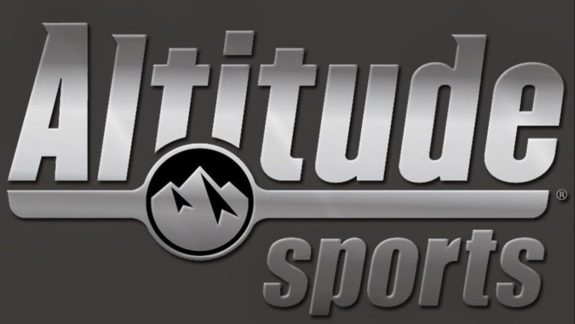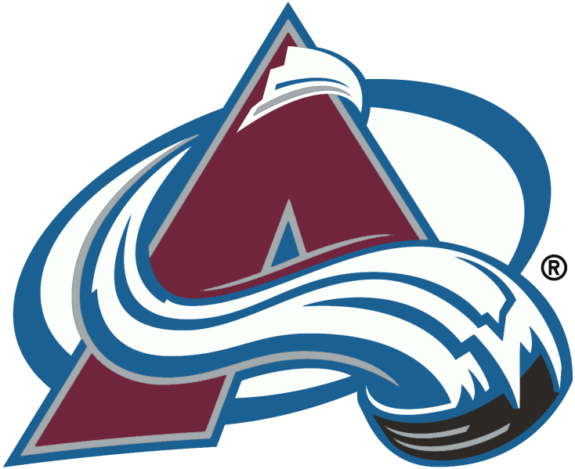If you are looking forward to watching the start of the Colorado Avalanche season on your local cable provider, don’t get your hopes up. Comcast, DirecTV, and Dish have blacked out Altitude Sports, the Kroenke owned station. Altitude is available in 10 states, so Colorado is not the only area impacted. The other states affected include Wyoming, Nebraska, Kansas, Utah, Idaho, Montana, Northern New Mexico, Northeast Nevada and Southwest South Dakota.

Avalanche fans also aren’t the only ones affected by the power move. Altitude also carries the Denver Nuggets (NBA), the Colorado Mammoth (NLL), the Colorado Rapids (MLS) and Denver University games. Currently, both sides appear to be at a stalemate. Altitude has posted their position online and the three providers have issued statements.
The Big 3 – Comcast, DirecTV and Dish
The providers (Comcast, DirecTV, and Dish) asserted that Altitude was wanting too much money. Comcast also included a statement that viewers watched an average of fewer than one game a week so it made sense to bump them up to a premium package (charging the customer more to get the regional sports).
There are a couple of problems with Comcast’s statement.
First, basic cable was originally intended to include local channels as well as a host of basic programming. That’s what customers pay for – the assortment of options. While I’m not sure the number of viewers who watch the shopping channels, it’s hard to justify keeping those stations on while eliminating local sports.
Second, if people aren’t watching Altitude, it hardly increases profits to make customers pay MORE for the product. The argument is disingenuous.
Comcast wants to charge more for Altitude because they think fans are devoted enough to pay more for the programming. It’s basic business. Both the Avalanche and the Nuggets look poised to be good for years to come, the Mammoth have made the postseason 15 out of 17 years and the Rapids are primed for a turnaround.
If Comcast really thought people wouldn’t pay for Altitude, they wouldn’t charge customers more for it.
Altitude claims the providers are asking them to take a 60% cut in revenues as well as removing their station from either the basic or the basic-plus packages the three distributors offer. Their concern also rests with the lack of availability of their product.
The Kroenke teams thrive with a wide distribution model. Winning teams tend to generate more fans which in turn will generate more revenue for the teams. Putting Altitude on a premium package many people can’t afford hampers acquiring new fans.
So, stalemate.
Much of the discussion has stopped there. But much more is going on. This is not just about Kroenke sports. This showdown is symptomatic of a much broader problem.

The Bigger Picture – Regional Sports on the Hot Seat
“Broadcast TV stations are being blacked out on cable and satellite TV systems in record numbers this year, with 230 blackouts so far,” wrote Jon Brodkin of ArsTechnica near the end of July.
Cable and satellite providers are putting the squeeze on regional sports programming throughout the country. Dish recently blacked out Fox Regional Sports over contract disagreements.
Dish Network chairman Charlie Ergen complained that regional sports networks (RSNs) are too expensive. Dish no longer carries three New York RSNs. It would be a challenge to find a bigger sports market than New York so the lack of viewership seems like a lame excuse.
Consider the fact that DirecTV blacked out CBS for nearly six weeks over a contract dispute. Does anyone really think CBS programming doesn’t garner a large audience? No. It’s all about the money and cable/satellite providers are putting the squeeze wherever they can, believing they won’t lose many subscribers in the process.
Comcast isn’t left out. They own NBC Universal, including NBC Regional Sports, and like their compatriots, they sell rights to their competitors to broadcast NBC properties. Comcast now owns seven RSNs. And they tried to acquire more, bidding on the Fox Sports RSNs that Disney recently sold to Sinclair.
All three – Comcast, DirecTV and Dish – have recently utilized their power as providers to acquire RSNs and blackout programming to force deep discounts.
The provider giants make most of their money by broadcasting their own shows. Consider for example that AT&T (who owns DirecTV) collected over $6 billion from Warner Media in fees. Warner is associated with TNT, CNN, Cartoon Network and TBS. Also, AT&T owns Warner Media.
“If not for the compensation broadcasters receive for their highly valued programming – programming that AT&T, Dish, and others re-sell to customers – broadcaster would be unable to support investigate journalism and expensive sports coverage and invest in sophisticated weather operations that save lives and provide in-depth local news coverage,” National Association of Broadcasters (NAB) CEO Gordon Smith stated in the ArsTechnica article.
There’s obviously money to be made in broadcasting RSNs, it’s simply that the providers want the money and are looking to dominate markets. By forcing the RSNs to sell to them, they can control their own costs and make a hefty profit. If local sports programming wasn’t profitable, none of these companies would be trying to acquire so many of them.
As for customers, it’s hard to understand how paying nearly $200 per month for cable/satellite broadcasts doesn’t provide enough money to cover local sports programming. The numbers don’t add up.
Pushing Fans to Look Elsewhere
There’s not much good news for Avalanche fans, or fans of any of the Altitude broadcast sports. If providers have no problem blacking out New York Yankees games indefinitely, it’s tough to see the issue getting resolved anytime soon.
Some fans have inquired about Altitude offering a streaming service but Altitude responded that it’s not financially feasible at this juncture.
This puts Altitude fans in an interesting position. And it’s a place cable and satellite providers may want to re-think their decision-making paradigms.
With more consumers cutting the cord, there are other options for watching sports. Some of them are more legal than others. But forcing customers to pursue other methods for watching their favorite local sports may not bode well for service providers in the long run.
Suppose someone wants to watch the Avalanche game and finds a way to watch it without relying on one of the big providers. What incentive do the customers have to continue subscribing to Comcast, DirecTV or Dish? These providers are almost forcing the consumers to look elsewhere and cut the cord.
Altitude’s Challenging Future
It also presents a quandary for Altitude. Kroenke finally has competitive teams to showcase and no medium for delivering the content. While many people seem upset with the Kroenkes for not taking a big pay cut, very few businesses could handle a 60% reduction in revenues and stay afloat. Even if they are rich. But that money could put them in a unique position to push back.
One option the Kroenkes could try is buying a local station, broadcast their games on it and force the providers to carry the channel. Local government gets to mandate which channels MUST be included on a basic plan. If the Kroenkes have the political clout and the desire to invest, this could be a viable alternative.
Another possibility could be running Altitude on local airwaves in the regions they serve. Antennas may not be sexy but people who want the programming can get one inexpensively and Altitude cuts out the middle man. Of course, then they are in the business of broadcasting, which involves garnering more money from advertising, something they may want to avoid. It may not be cost-effective but neither is continuing to be blacked out.
What About the Fans?
One wild card option remains for the sports fan. The NHL, or a combination of all of sports entities impacted, could step in to mediate a resolution. It’s not likely, but it is a possibility. At this juncture, a ‘hail Mary’ may be the only hope for a resolution in the near future.
Regardless of which side people support, one thing is clear. The fans are the ones getting hurt the most and neither side seems interested in addressing that. Maybe everyone trying to sell people stuff should consider what’s best for the customer.
Perhaps in another life.